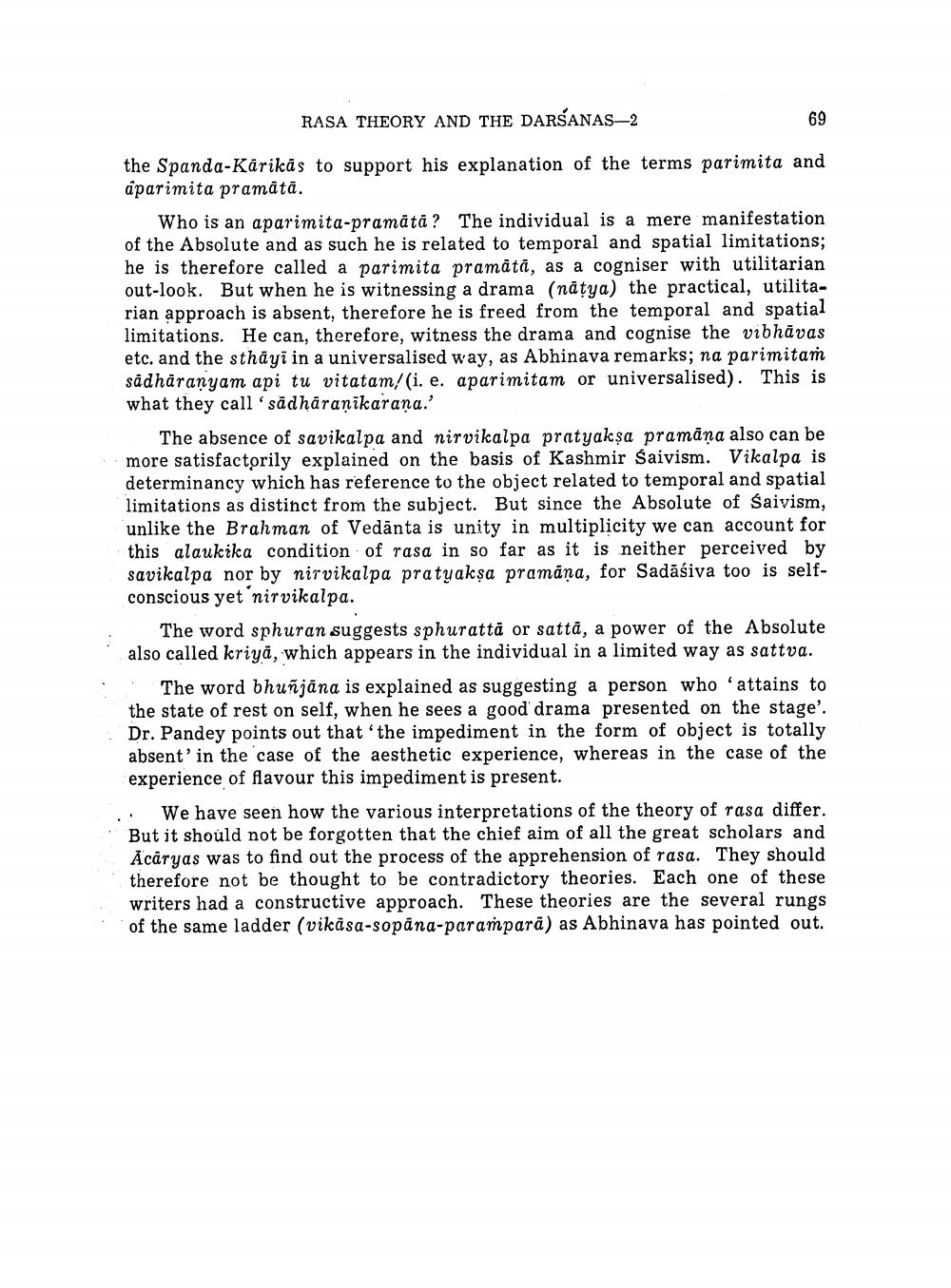________________
RASA THEORY AND THE DARSANAS–2
69
the Spanda-Karikās to support his explanation of the terms parimita and aparimita pramātā.
Who is an aparimita-pramätá? The individual is a mere manifestation of the Absolute and as such he is related to temporal and spatial limitations; he is therefore called a parimita pramātā, as a cogniser with utilitarian out-look. But when he is witnessing a drama (natya) the practical, utilitarian approach is absent, therefore he is freed from the temporal and spatial limitations. He can, therefore, witness the drama and cognise the vibhāvas etc. and the sthāyi in a universalised way, as Abhinava remarks; na parimitam sādharanyam api tu vitatam/(i. e. aparimitam or universalised). This is what they call'sådhäranikarana.'
The absence of savikalpa and nirvikalpa pratyaksa pramāna also can be more satisfactorily explained on the basis of Kashmir saivism. Vikalpa is determinancy which has reference to the object related to temporal and spatial limitations as distinct from the subject. But since the Absolute of Saivism, unlike the Brahman of Vedānta is unity in multiplicity we can account for this alaukika condition of rasa in so far as it is neither perceived by savikalpa nor by nirvikalpa pratyaksa pramāna, for Sadāśiva too is selfconscious yet nirvikalpa.
The word sphuran suggests sphurattā or satta, a power of the Absolute also called kriya, which appears in the individual in a limited way as sattva.
The word bhuñjāna is explained as suggesting a person who 'attains to the state of rest on self, when he sees a good drama presented on the stage'. Dr. Pandey points out that the impediment in the form of object is totally absent' in the case of the aesthetic experience, whereas in the case of the experience of flavour this impediment is present.
We have seen how the various interpretations of the theory of rasa differ. But it should not be forgotten that the chief aim of all the great scholars and Acāryas was to find out the process of the apprehension of rasa. They should therefore not be thought to be contradictory theories. Each one of these writers had a constructive approach. These theories are the several rungs of the same ladder (vikasa-sopana-paramparā) as Abhinava has pointed out.
:




